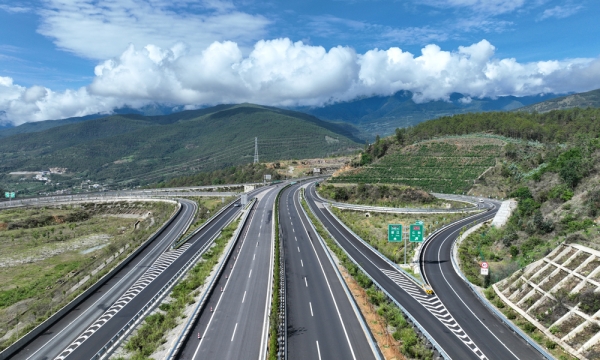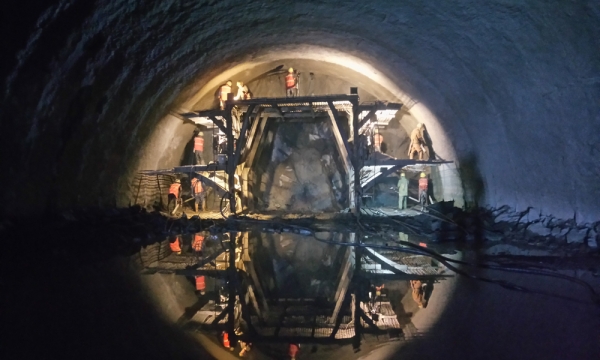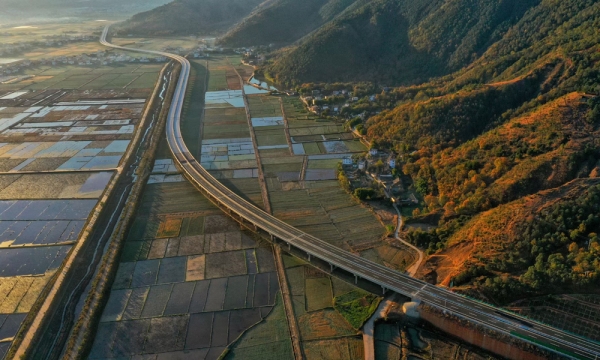The rainy season in Southwest China's Yunnan province brings concentrated downpours, often causing flash floods. After heavy rains, water levels in riverbeds and beneath rock layers rise rapidly, posing severe challenges for construction projects.
But as the first vehicle sped through the newly-completed Dongmachang No 1 Tunnel on Sept 28, 2024, it became clear that those working on the Huaping-Lijiang Expressway had successfully overcome those challenges and achieved full operation and open traffic along the entire route.
The expressway, constructed and operated by China State Construction Engineering Corporation (CSCEC), features 13 interchanges, three service areas and three parking areas. It was built to the standard of a four-lane dual carriageway, facilitating speeds of 80 kilometers per hour and spanning a total distance of 150.8 km. Bridges and tunnels account for 74 percent of the expressway, with many bridge piers located on steep cliffs, some exceeding 100 meters in height.
Faced with complex geological conditions, high safety risks and significant technical difficulties, the project team invited academicians and experts to conduct on-site investigations and formulate solutions. Several technical studies relating to the project have been recognized by relevant authorities and industry associations as reaching international leading standards.
During construction, new technologies and new equipment, including geological forecasting for tunnels, were applied. The project team tackled different kinds of challenges, and they developed comprehensive technical solutions for rapid construction adjustments, post-construction maintenance, geological disaster prevention and emergency response, systematically summarizing construction parameters and methods. These efforts have provided valuable technical experience for the construction of long water-rich karst tunnels and earthquake-prone long tunnels in China.
As a key project under the Belt and Road Initiative, the Huaping-Lijiang Expressway is part of China’s G4216 Chengdu-Lijiang Expressway.
The route passes through areas inhabited by some ethnic groups such as the Naxi and Yi. With the opening of the expressway, the travel time from Lijiang in Yunnan province to Panzhihua in Southwest China's Sichuan province has been reduced from more than six hours to just over two hours. It stretches to Dali city and the ASEAN countries in the south, reaches the Xizang autonomous region in the north, provides access eastward through Huaping county to Southwest China’s Sichuan province and Chongqing municipality, and goes westward through Baoshan city to South Asia.

The Huaping-Lijiang Expressway fully opened for traffic on Sept 28. [Photo/sasac.gov.cn]

The Huaping-Lijiang Expressway during construction [Photo/sasac.gov.cn]

The project is built to the standard of a four-lane dual carriageway, facilitating speeds of 80 kilometers per hour and spanning a total distance of 150.8 km. [Photo/sasac.gov.cn]

With the opening of the expressway, the travel time from Lijiang in Yunnan to Panzhihua in Southwest China's Sichuan province has been reduced from over six hours to just over two hours. [Photo/sasac.gov.cn]

The route passes through areas inhabited by some ethnic groups such as the Naxi and Yi. [Photo/sasac.gov.cn]
(Executive editor: Zhu Zeya)